Diagram is showing chemical structure of Morphine, which is a natural opiate like codeine. Morphine is a strong analgesic, also has sedative & calming effect. It depresses respiratory centre, BP, heart beat. Constipation is a prominant feature of morphine action. How many ester linkages are present in a morphine moleucle ?
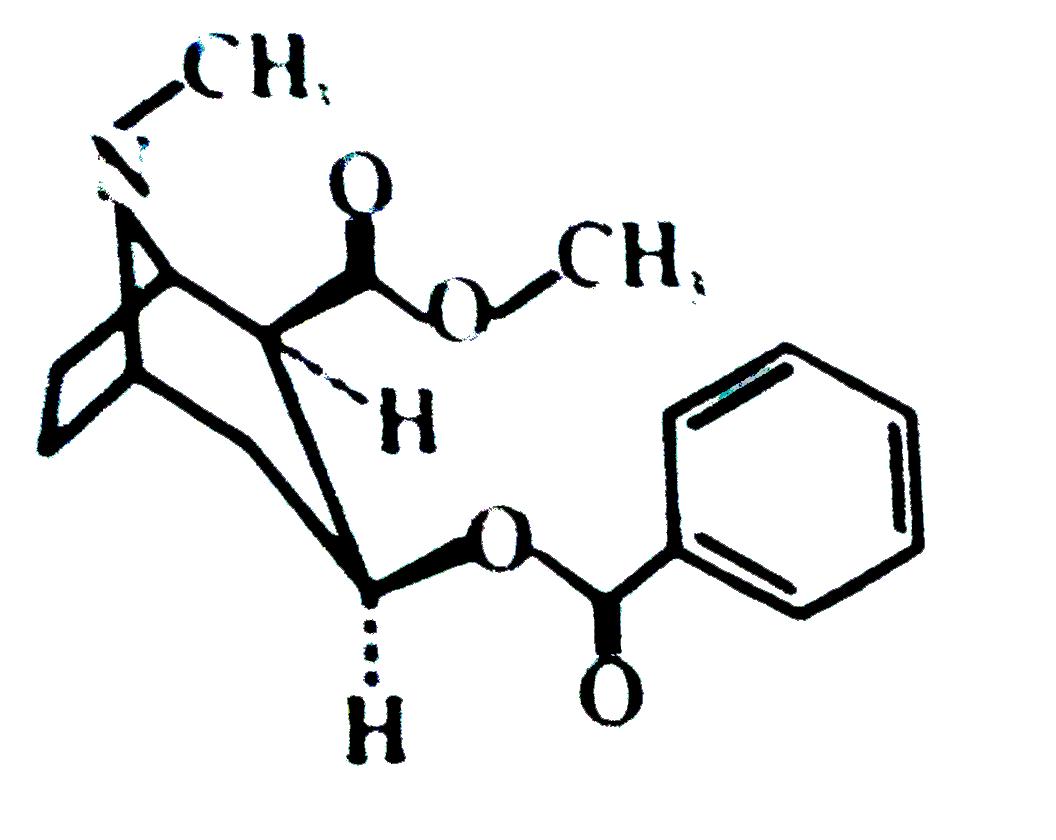
2
3
4
Absent
The correct Answer is:A
Step by step video & image solution for Diagram is showing chemical structure of Morphine, which is a natural opiate like codeine. Morphine is a strong analgesic, also has sedative & calming effect. It depresses respiratory centre, BP, heart beat. Constipation is a prominant feature of morphine action. How many ester linkages are present in a morphine moleucle ? by Biology experts to help you in doubts & scoring excellent marks in Class 12 exams.
Updated on:21/07/2023Topper's Solved these Questions
- BIOLOGY IN HUMAN WELFARE (HEALTH & DISEASES) BOOK - ALLENCHAPTER - BIOLOGY IN HUMAN WELFARE (HEALTH & DISEASES) EXERCISE - Exercise -IV Assertion : Reason
20 Videos
- BIOLOGY IN HUMAN WELFARE (HEALTH & DISEASES) BOOK - ALLENCHAPTER - BIOLOGY IN HUMAN WELFARE (HEALTH & DISEASES) EXERCISE - Exercise -II
66 Videos
- BIOLOGY IN HUMAN WELFARE (DOMESTICATION OF PLANTS & ANIMALS) BOOK - ALLENCHAPTER - BIOLOGY IN HUMAN WELFARE (DOMESTICATION OF PLANTS & ANIMALS) EXERCISE - Exercise-IV (Assertion & Reason)
8 Videos
- BIOMOLECULE - IBOOK - ALLENCHAPTER - BIOMOLECULE - IEXERCISE - S
20 Videos
Similar Questions
Narcotics are chemical substances which produce sleep and unconsciousness. Morphine diacetate is most widely used analgesic . How many double bond equivalents are present in morphine diacetate ?
View SolutionPassage-2
The chemicals used to treat diseases and to reduce the suffering from pain are known as drugs or medicines. The chemicals used in chemotherapy are classified according to their action.
For example antipyretics are medicines used to lower the body temperature in high fever. The examples of antipyretics are para ethoxy acetamide and analgin.

Analgesics are medicines which relieve pain. They are of two types. (i) Narcotics are medicines which relieve pain by producing sleep and unconsciousness. They are morphine, morphine diacetate (heroin) and codeine. They are habit forming (ii) Non narcotic analgesics are not habit forming and do not usually induce sleep. They are aspirin, brufen and butazolidine.
Antiseptics are medicines which kill or prevent the growth of micro-organisms Antiseptics are also used to reduce odours arising out of bacterial decomposition on the surface of the body. They are 2% solution of phenol, dettol (a solution of terpincol and chloro-xylenol) savlon, bithional etc.
Disinfectants are medicines which kill the microorganisms but are not safe for application to living tissues.
Tranquillizers are medicines used to relieve mental tension and an anxiety. They act on the nervous system and induce sleep. They may antidepressants (to elevate mood) such as methedrine and vitalin, sedatives (relieve mental agitation and violence) such as diazopam, seconal, luminal and equanil.
Antibiotics are medicines produced by micro-organisms such as fungi, bacteria and moulds and are used to kill other microorganisms. They are penicillin (Treat sore throat, bronchitis, pneumonia), streptomycin (active against tuberclosis, chloramphenicol treat typhoid, acute fever, urinary infection.
The drug mathedrine belongs to the class of:
View Solution
Knowledge Check
Passage-2
The chemicals used to treat diseases and to reduce the suffering from pain are known as drugs or medicines. The chemicals used in chemotherapy are classified according to their action.
For example antipyretics are medicines used to lower the body temperature in high fever. The examples of antipyretics are para ethoxy acetamide and analgin.

Analgesics are medicines which relieve pain. They are of two types. (i) Narcotics are medicines which relieve pain by producing sleep and unconsciousness. They are morphine, morphine diacetate (heroin) and codeine. They are habit forming (ii) Non narcotic analgesics are not habit forming and do not usually induce sleep. They are aspirin, brufen and butazolidine.
Antiseptics are medicines which kill or prevent the growth of micro-organisms Antiseptics are also used to reduce odours arising out of bacterial decomposition on the surface of the body. They are 2% solution of phenol, dettol (a solution of terpincol and chloro-xylenol) savlon, bithional etc.
Disinfectants are medicines which kill the microorganisms but are not safe for application to living tissues.
Tranquillizers are medicines used to relieve mental tension and an anxiety. They act on the nervous system and induce sleep. They may antidepressants (to elevate mood) such as methedrine and vitalin, sedatives (relieve mental agitation and violence) such as diazopam, seconal, luminal and equanil.
Antibiotics are medicines produced by micro-organisms such as fungi, bacteria and moulds and are used to kill other microorganisms. They are penicillin (Treat sore throat, bronchitis, pneumonia), streptomycin (active against tuberclosis, chloramphenicol treat typhoid, acute fever, urinary infection.
Antiseptic action of dettol is due to :ACyclohexanolBChloroxylenolCChloramphenicolDNone of thesePassage-2
The chemicals used to treat diseases and to reduce the suffering from pain are known as drugs or medicines. The chemicals used in chemotherapy are classified according to their action.
For example antipyretics are medicines used to lower the body temperature in high fever. The examples of antipyretics are para ethoxy acetamide and analgin.

Analgesics are medicines which relieve pain. They are of two types. (i) Narcotics are medicines which relieve pain by producing sleep and unconsciousness. They are morphine, morphine diacetate (heroin) and codeine. They are habit forming (ii) Non narcotic analgesics are not habit forming and do not usually induce sleep. They are aspirin, brufen and butazolidine.
Antiseptics are medicines which kill or prevent the growth of micro-organisms Antiseptics are also used to reduce odours arising out of bacterial decomposition on the surface of the body. They are 2% solution of phenol, dettol (a solution of terpincol and chloro-xylenol) savlon, bithional etc.
Disinfectants are medicines which kill the microorganisms but are not safe for application to living tissues.
Tranquillizers are medicines used to relieve mental tension and an anxiety. They act on the nervous system and induce sleep. They may antidepressants (to elevate mood) such as methedrine and vitalin, sedatives (relieve mental agitation and violence) such as diazopam, seconal, luminal and equanil.
Antibiotics are medicines produced by micro-organisms such as fungi, bacteria and moulds and are used to kill other microorganisms. They are penicillin (Treat sore throat, bronchitis, pneumonia), streptomycin (active against tuberclosis, chloramphenicol treat typhoid, acute fever, urinary infection.
Medicine which is antibiotic is :AAspirinBCalmposeCChloroquineDAmpicillinPassage-2
The chemicals used to treat diseases and to reduce the suffering from pain are known as drugs or medicines. The chemicals used in chemotherapy are classified according to their action.
For example antipyretics are medicines used to lower the body temperature in high fever. The examples of antipyretics are para ethoxy acetamide and analgin.
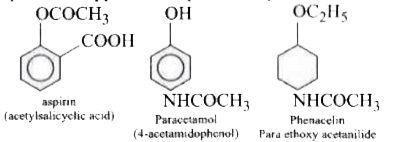
Analgesics are medicines which relieve pain. They are of two types. (i) Narcotics are medicines which relieve pain by producing sleep and unconsciousness. They are morphine, morphine diacetate (heroin) and codeine. They are habit forming (ii) Non narcotic analgesics are not habit forming and do not usually induce sleep. They are aspirin, brufen and butazolidine.
Antiseptics are medicines which kill or prevent the growth of micro-organisms Antiseptics are also used to reduce odours arising out of bacterial decomposition on the surface of the body. They are 2% solution of phenol, dettol (a solution of terpincol and chloro-xylenol) savlon, bithional etc.
Disinfectants are medicines which kill the microorganisms but are not safe for application to living tissues.
Tranquillizers are medicines used to relieve mental tension and an anxiety. They act on the nervous system and induce sleep. They may antidepressants (to elevate mood) such as methedrine and vitalin, sedatives (relieve mental agitation and violence) such as diazopam, seconal, luminal and equanil.
Antibiotics are medicines produced by micro-organisms such as fungi, bacteria and moulds and are used to kill other microorganisms. They are penicillin (Treat sore throat, bronchitis, pneumonia), streptomycin (active against tuberclosis, chloramphenicol treat typhoid, acute fever, urinary infection.
Which of the following compounds is aspirin ?AAcetyl salicylic acidBMethyl salicylateCPhenyl salicylateDSalicylic acid
The chemical formula of deoxyribonucleic acid
(DNA) is now well established. The molecule is a
very long chain, the backbone of which consists of a
regular alternation of sugar and phosphate groups.
5 To each sugar is attached a nitrogenous base, which
can be of four different types. Two of the possible
bases—adenine and guanine—are purines, and the
other two—thymine and cytosine—are pyrimidines.
So far as is known, the sequence of bases along the
10 chain is irregular. The monomer unit, consisting of
phosphate, sugar and base, is known as a nucleotide.
The first feature of our structure which is of
biological interest is that it consists not of one chain,
but of two. These two chains are both coiled around
15 a common fiber axis. It has often been assumed that
since there was only one chain in the chemical
formula there would only be one in the structural
unit. However, the density, taken with the X-ray
evidence, suggests very strongly that there are two.
20. The other biologically important feature is the
manner in which the two chains are held together.
This is done by hydrogen bonds between the bases.
The bases are joined together in pairs, a single base
from one chain being hydrogen-bonded to a single
25 base from the other. The important point is that only
certain pairs of bases will fit into the structure.
One member of a pair must be a purine and the other
a pyrimidine in order to bridge between the two
chains. If a pair consisted of two purines, for
30 example, there would not be room for it.
We believe that the bases will be present almost
entirely in their most probable forms. If this is true,
the conditions for forming hydrogen bonds are more
restrictive, and the only pairs of bases possible are:
35 adenine with thymine, and guanine with cytosine.
Adenine, for example, can occur on either chain, but
when it does, its partner on the other chain must
always be thymine.
The phosphate-sugar backbone of our model is
40 completely regular, but any sequence of the pairs of
bases can fit into the structure. It follows that in a
long molecule many different permutations are
possible, and it therefore seems likely that the precise
sequence of bases is the code which carries the
45 genetical information. If the actual order of the bases
on one of the pair of chains were given, one could
write down the exact order of the bases on the other
one, because of the specific pairing. Thus one chain
is, as it were, the complement of the other, and it is
50 this feature which suggests how the deoxyribonucleic
acid molecule might duplicate itself.
The table shows, for various organisms, the percentage of
each of the four types of nitrogenous bases in that
organism’s DNA.

Adapted from Manju Bansal, “DNA Structure: Revisiting the
Watson-Crick Double Helix.” ©2003 by Current Science Association,
Bangalore
31. Based on the table, is the percentage of adenine in each organism’s DNA the same or does it vary, and which statement made by the authors is most consistent with that data?
View SolutionThe chemical formula of deoxyribonucleic acid
(DNA) is now well established. The molecule is a
very long chain, the backbone of which consists of a
regular alternation of sugar and phosphate groups.
5 To each sugar is attached a nitrogenous base, which
can be of four different types. Two of the possible
bases—adenine and guanine—are purines, and the
other two—thymine and cytosine—are pyrimidines.
So far as is known, the sequence of bases along the
10 chain is irregular. The monomer unit, consisting of
phosphate, sugar and base, is known as a nucleotide.
The first feature of our structure which is of
biological interest is that it consists not of one chain,
but of two. These two chains are both coiled around
15 a common fiber axis. It has often been assumed that
since there was only one chain in the chemical
formula there would only be one in the structural
unit. However, the density, taken with the X-ray
evidence, suggests very strongly that there are two.
20. The other biologically important feature is the
manner in which the two chains are held together.
This is done by hydrogen bonds between the bases.
The bases are joined together in pairs, a single base
from one chain being hydrogen-bonded to a single
25 base from the other. The important point is that only
certain pairs of bases will fit into the structure.
One member of a pair must be a purine and the other
a pyrimidine in order to bridge between the two
chains. If a pair consisted of two purines, for
30 example, there would not be room for it.
We believe that the bases will be present almost
entirely in their most probable forms. If this is true,
the conditions for forming hydrogen bonds are more
restrictive, and the only pairs of bases possible are:
35 adenine with thymine, and guanine with cytosine.
Adenine, for example, can occur on either chain, but
when it does, its partner on the other chain must
always be thymine.
The phosphate-sugar backbone of our model is
40 completely regular, but any sequence of the pairs of
bases can fit into the structure. It follows that in a
long molecule many different permutations are
possible, and it therefore seems likely that the precise
sequence of bases is the code which carries the
45 genetical information. If the actual order of the bases
on one of the pair of chains were given, one could
write down the exact order of the bases on the other
one, because of the specific pairing. Thus one chain
is, as it were, the complement of the other, and it is
50 this feature which suggests how the deoxyribonucleic
acid molecule might duplicate itself.
The table shows, for various organisms, the percentage of
each of the four types of nitrogenous bases in that
organism’s DNA.
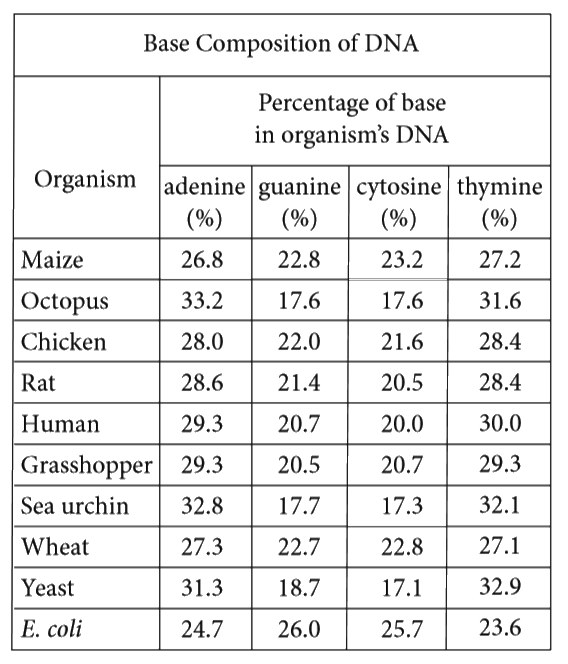
Adapted from Manju Bansal, “DNA Structure: Revisiting the
Watson-Crick Double Helix.” ©2003 by Current Science Association,
Bangalore
25. The authors’ main purpose of including the information about X-ray evidence and density is to
View SolutionThe chemical formula of deoxyribonucleic acid
(DNA) is now well established. The molecule is a
very long chain, the backbone of which consists of a
regular alternation of sugar and phosphate groups.
5 To each sugar is attached a nitrogenous base, which
can be of four different types. Two of the possible
bases—adenine and guanine—are purines, and the
other two—thymine and cytosine—are pyrimidines.
So far as is known, the sequence of bases along the
10 chain is irregular. The monomer unit, consisting of
phosphate, sugar and base, is known as a nucleotide.
The first feature of our structure which is of
biological interest is that it consists not of one chain,
but of two. These two chains are both coiled around
15 a common fiber axis. It has often been assumed that
since there was only one chain in the chemical
formula there would only be one in the structural
unit. However, the density, taken with the X-ray
evidence, suggests very strongly that there are two.
20. The other biologically important feature is the
manner in which the two chains are held together.
This is done by hydrogen bonds between the bases.
The bases are joined together in pairs, a single base
from one chain being hydrogen-bonded to a single
25 base from the other. The important point is that only
certain pairs of bases will fit into the structure.
One member of a pair must be a purine and the other
a pyrimidine in order to bridge between the two
chains. If a pair consisted of two purines, for
30 example, there would not be room for it.
We believe that the bases will be present almost
entirely in their most probable forms. If this is true,
the conditions for forming hydrogen bonds are more
restrictive, and the only pairs of bases possible are:
35 adenine with thymine, and guanine with cytosine.
Adenine, for example, can occur on either chain, but
when it does, its partner on the other chain must
always be thymine.
The phosphate-sugar backbone of our model is
40 completely regular, but any sequence of the pairs of
bases can fit into the structure. It follows that in a
long molecule many different permutations are
possible, and it therefore seems likely that the precise
sequence of bases is the code which carries the
45 genetical information. If the actual order of the bases
on one of the pair of chains were given, one could
write down the exact order of the bases on the other
one, because of the specific pairing. Thus one chain
is, as it were, the complement of the other, and it is
50 this feature which suggests how the deoxyribonucleic
acid molecule might duplicate itself.
The table shows, for various organisms, the percentage of
each of the four types of nitrogenous bases in that
organism’s DNA.
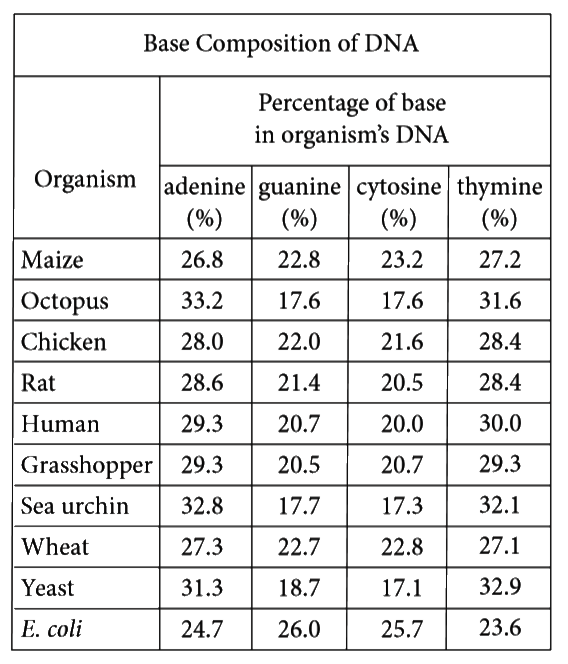
Adapted from Manju Bansal, “DNA Structure: Revisiting the
Watson-Crick Double Helix.” ©2003 by Current Science Association,
Bangalore
26. Based on the passage, the authors’ statement “If a pair consisted of two purines, for example, there would not be room for it” (lines 29-30) implies that a pair
View SolutionThe chemical formula of deoxyribonucleic acid
(DNA) is now well established. The molecule is a
very long chain, the backbone of which consists of a
regular alternation of sugar and phosphate groups.
5 To each sugar is attached a nitrogenous base, which
can be of four different types. Two of the possible
bases—adenine and guanine—are purines, and the
other two—thymine and cytosine—are pyrimidines.
So far as is known, the sequence of bases along the
10 chain is irregular. The monomer unit, consisting of
phosphate, sugar and base, is known as a nucleotide.
The first feature of our structure which is of
biological interest is that it consists not of one chain,
but of two. These two chains are both coiled around
15 a common fiber axis. It has often been assumed that
since there was only one chain in the chemical
formula there would only be one in the structural
unit. However, the density, taken with the X-ray
evidence, suggests very strongly that there are two.
20. The other biologically important feature is the
manner in which the two chains are held together.
This is done by hydrogen bonds between the bases.
The bases are joined together in pairs, a single base
from one chain being hydrogen-bonded to a single
25 base from the other. The important point is that only
certain pairs of bases will fit into the structure.
One member of a pair must be a purine and the other
a pyrimidine in order to bridge between the two
chains. If a pair consisted of two purines, for
30 example, there would not be room for it.
We believe that the bases will be present almost
entirely in their most probable forms. If this is true,
the conditions for forming hydrogen bonds are more
restrictive, and the only pairs of bases possible are:
35 adenine with thymine, and guanine with cytosine.
Adenine, for example, can occur on either chain, but
when it does, its partner on the other chain must
always be thymine.
The phosphate-sugar backbone of our model is
40 completely regular, but any sequence of the pairs of
bases can fit into the structure. It follows that in a
long molecule many different permutations are
possible, and it therefore seems likely that the precise
sequence of bases is the code which carries the
45 genetical information. If the actual order of the bases
on one of the pair of chains were given, one could
write down the exact order of the bases on the other
one, because of the specific pairing. Thus one chain
is, as it were, the complement of the other, and it is
50 this feature which suggests how the deoxyribonucleic
acid molecule might duplicate itself.
The table shows, for various organisms, the percentage of
each of the four types of nitrogenous bases in that
organism’s DNA.
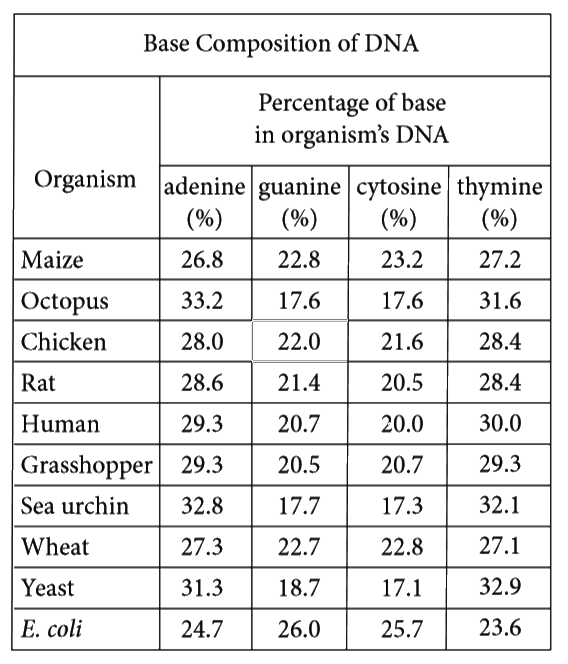
Adapted from Manju Bansal, “DNA Structure: Revisiting the
Watson-Crick Double Helix.” ©2003 by Current Science Association,
Bangalore
24. In the second paragraph (lines 12-19), what do the authors claim to be a feature of biological interest?
View SolutionThe chemical formula of deoxyribonucleic acid
(DNA) is now well established. The molecule is a
very long chain, the backbone of which consists of a
regular alternation of sugar and phosphate groups.
5 To each sugar is attached a nitrogenous base, which
can be of four different types. Two of the possible
bases—adenine and guanine—are purines, and the
other two—thymine and cytosine—are pyrimidines.
So far as is known, the sequence of bases along the
10 chain is irregular. The monomer unit, consisting of
phosphate, sugar and base, is known as a nucleotide.
The first feature of our structure which is of
biological interest is that it consists not of one chain,
but of two. These two chains are both coiled around
15 a common fiber axis. It has often been assumed that
since there was only one chain in the chemical
formula there would only be one in the structural
unit. However, the density, taken with the X-ray
evidence, suggests very strongly that there are two.
20. The other biologically important feature is the
manner in which the two chains are held together.
This is done by hydrogen bonds between the bases.
The bases are joined together in pairs, a single base
from one chain being hydrogen-bonded to a single
25 base from the other. The important point is that only
certain pairs of bases will fit into the structure.
One member of a pair must be a purine and the other
a pyrimidine in order to bridge between the two
chains. If a pair consisted of two purines, for
30 example, there would not be room for it.
We believe that the bases will be present almost
entirely in their most probable forms. If this is true,
the conditions for forming hydrogen bonds are more
restrictive, and the only pairs of bases possible are:
35 adenine with thymine, and guanine with cytosine.
Adenine, for example, can occur on either chain, but
when it does, its partner on the other chain must
always be thymine.
The phosphate-sugar backbone of our model is
40 completely regular, but any sequence of the pairs of
bases can fit into the structure. It follows that in a
long molecule many different permutations are
possible, and it therefore seems likely that the precise
sequence of bases is the code which carries the
45 genetical information. If the actual order of the bases
on one of the pair of chains were given, one could
write down the exact order of the bases on the other
one, because of the specific pairing. Thus one chain
is, as it were, the complement of the other, and it is
50 this feature which suggests how the deoxyribonucleic
acid molecule might duplicate itself.
The table shows, for various organisms, the percentage of
each of the four types of nitrogenous bases in that
organism’s DNA.
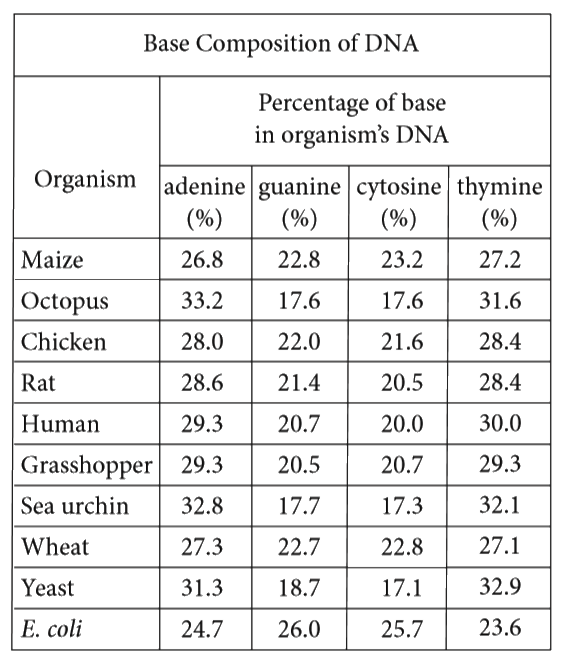
Adapted from Manju Bansal, “DNA Structure: Revisiting the
Watson-Crick Double Helix.” ©2003 by Current Science Association,
Bangalor
27. The authors’ use of the words “exact,” “specific,” and “complement” in lines 47-49 in the final paragraph functions mainly to
View Solution
